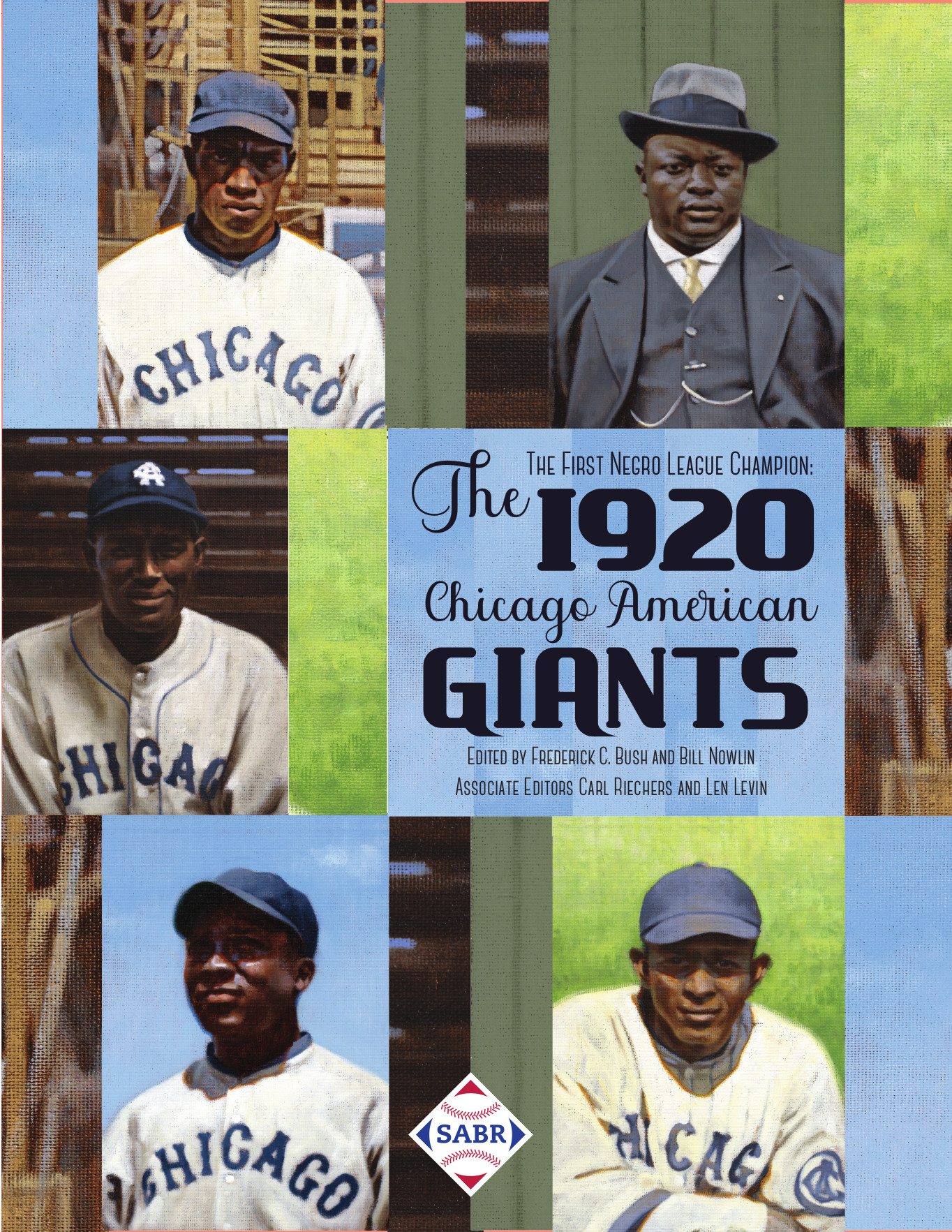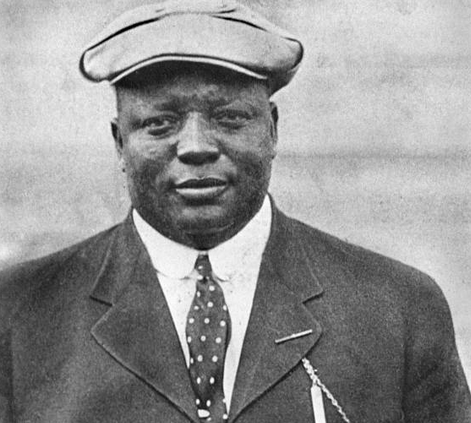October 31, 1920: Chicago American Giants end historic season with loss to Jack Quinn-led Normals
 It was almost November, but Rube Foster‘s 1920 Chicago American Giants were still at it, and taking on Jack Quinn, the spitballing 18-game winner for that season’s New York Yankees. The owner-manager’s team and, indeed, Foster’s league, the Negro National League of Colored Base Ball Professionals (NNL), did not survive and thrive by avoiding challenges.
It was almost November, but Rube Foster‘s 1920 Chicago American Giants were still at it, and taking on Jack Quinn, the spitballing 18-game winner for that season’s New York Yankees. The owner-manager’s team and, indeed, Foster’s league, the Negro National League of Colored Base Ball Professionals (NNL), did not survive and thrive by avoiding challenges.
Foster rang in 1920 by proposing the formation of what would become the NNL. By February, the league was a reality, and by September, his American Giants were pennant-winners. Foster’s achievement went beyond the standings: His league had lasted the season, a first for a Negro Leagues organization.1
After wrapping up NNL action, the American Giants hit the road. Their postseason barnstorming tour took them first to the South and then to the East Coast, where they closed out their run by sweeping a doubleheader at Ebbets Field from the Atlantic City Bacharach Giants, an independent Negro Leagues team.2 Then Foster’s squad returned to Chicago to play one final game. Their opponents: Jack Quinn and the Normals.
A White semipro team that played its home games at Normal Park, then the football home to the Chicago Cardinals,3 the 1920 Normals were managed by Charley Giesman4 and featured ever-evolving lineups that occasionally spotlighted players in between big-league stints. On October 9, 1920, for instance, Charlie Deal, the veteran third baseman for the Chicago Cubs, popped up in the Normals’ starting nine just six days after playing in his National League squad’s season finale.5 The same game was to have seen the Normals give the ball to right-hander Jack Quinn, two weeks past his own final major-league start of the year.6 (A Chicago Tribune box score from the Normals’ October 9 game, however, shows that Normals regular Paul “Shorty” Des Jardien, not Quinn, took the mound in the game.)7
While the Normals primarily competed against other White semipro teams that belonged to what was known as the Chicago League,8 they also participated in interracial exhibition games. The same was true of the American Giants. In 1920, even while playing the inaugural NNL schedule, Foster’s team made time for side action with White teams from Chicago, including the Normals. That year, the Normals and American Giants first met on July 5 at Normal Park.9
With Shorty Des Jardien on the mound for the semipros, the American Giants were held scoreless through five innings, and the Normals went up 2-0. Then, powered in part by a home run from second baseman Bingo DeMoss, the American Giants battled back with two runs each in the sixth and seventh innings, and won the game, 4-3.10
By the time the teams planned to meet again in the fall at the American Giants’ Schorling Park, their matchup was called a “championship.”11 And while the Chicago Tribune used purple prose to describe the exhibition, the game was indeed to be a meeting of winners. While Foster’s team had claimed the NNL pennant, the Normals, as of the October 17 results of the “three cornered series“ involving the Normals, Pyotts, and Logan Squares, were Chicago’s interpark champs.12
The October 22 edition of the Chicago Tribune noted that the Normals “disbanded after last Sunday’s game,“ presumably the interpark tournament finale.13 But the paper also reported that Charley Giesman had “gathered the men together again,” including Jack Quinn, for an October 24 matchup against the American Giants.14 After rain washed out the date, the October 26 Tribune reported, Giesman and Rube Foster “got together … and decided to try again Sunday.”15
The new date was October 31. Quinn remained available to the Normals, and was scheduled to start the contest at Schorling. In addition to the Yankees star, the Tribune promised that the Normals “will have one or two additional topnotchers.”16
True to the reporting, the Normals’ Halloween lineup bore little resemblance to the one the team had used as recently as October 9. Charlie Deal and Shorty Des Jardien were absent from the box scores, as was every other starter save catcher Leo Dixon, who had spent the bulk of 1920 with the Rock Island Islanders of the Illinois-Indiana-Iowa League, better known as the Three-I or Three-Eye League.
Showing up in the batting order instead were names like Wickland, Mostil, and Pechous – presumably Al Wickland, Johnny Mostil, and Charlie Pechous, all minor-league all-stars that year with the Midwest-centric American Association.17 Rounding out the Normals’ starting lineup were Quinn, the pitcher; Leo Dixon, the catcher; a second baseman noted only as Winkler; a left fielder listed as Schick (possibly Morrie Schick, an outfielder who was a Chicago product but who had spent the 1920 regular season on the West Coast with the Pacific Coast League’s San Francisco Seals); first baseman Beale (possibly the same Beale who’d handled the position that year for the Chicago League’s Samson Tractors);18 and shortstop Daubert (presumably not the star big-league first baseman Jake Daubert, though possibly his cousin Harry Daubert, who had been noted as playing shortstop in 1920 for the Toledo Rail Lights, an Ohio semipro team.)19
Foster, meanwhile, came to play with an American Giants lineup that needed little tinkering. It included Jelly Gardner in the leadoff spot and playing right; third baseman (and future Negro Leagues manager) Dave Malarcher; second baseman Bingo DeMoss; and Robert Edward “Judy” Gans in left. Six-foot-tall “Long Tom” Johnson,20 who was a primary right-handed weapon on Foster’s roster, was the starter. Johnson’s batterymate was listed in the box scores from both the Chicago Tribune and Chicago Whip as “B. Dixon” (though George Dixon was one of the American Giants’ catchers in 1920).
Foster’s lineup card was missing two usual names: Bobby Williams, the starting shortstop; and, most notably, the team’s top hitter, Cristóbal Torriente, the future Baseball Hall of Famer. (Torriente possibly was in, or en route, to his native Cuba, where days after the Normals-American Giants game, the slugger made headlines for outshining Babe Ruth in barnstorming action there.21)
In Williams’s place was a player listed alternately as “B’kwith” and “Beck’h,” possibly John Beckwith, a versatile infielder from the NNL’s Chicago Giants, or his brother, Stanley Beckwith, a former shortstop with the Chicago Giants. In center field in place of Torriente, and batting cleanup, was a player listed only as Hill, possibly Pete Hill, the strong-hitting outfielder of the NNL’s Detroit Stars (and an American Giants alumnus).
Game day in Chicago was unseasonably warm, with an afternoon high of 60 degrees. Chicago Whip sportswriter Julius Culpepper described the turnout as consisting of a “very large crowd of dyed in the wool fans.”22 But it turned out to be a trying day for the Schorling Park faithful.
Jack Quinn was on, striking out 12; and Tom Johnson was not, “pitching a bum of a game,” as Culpepper wrote. Johnson walked four in an outing that saw him relieved in the third by right-hander Tom Williams, owner of one of the stingiest ERAs in 1920 NNL play (1.83). Inheriting a mess, Williams gave up a two-run triple to his first batter, the Normals’ Schick, but then settled in and painted “a beauty” of a game, Culpepper reported.
In all, the Normals posted four runs in the third – the only scoring they needed. Quinn gave up just four hits and held Foster’s crew to two runs, both of which came in the sixth inning due to what the Chicago Tribune called “[w]abbly [sic] fielding.”23 (The box scores in the local Chicago papers show errors were charged to the Normals’ Schick and Daubert; Judy Gans was assessed the American Giants’ lone error.)
The Normals won the game, 4-2 – a close outcome that the Tribune nonetheless described as a “trounc[ing].”24 The Black press was not much more forgiving. Culpepper described the American Giants’ loss as a “disastrous defeat.”25
Ultimately, though, the Whip writer noted that there was no shame in how things played out. “The fact that the Fosterites were beaten,” Culpepper wrote, “does not say they were outclassed. …”26 Rube Foster’s Chicago American Giants lost their last game, but by surviving and thriving in a history-making season, they still had won the first war.
Sources
In addition to the sources cited in the notes below, the author consulted Baseball-Reference.com, Seamheads.com, Bravehost (negroleagues.bravehost.com/aab.html), and The Encyclopedia of Chicago online at www.encyclopedia.chicagohistory.org/pages/114.html.
Notes
1 For more on Foster, see Larry Lester, “Andrew (Rube) Foster: Gem of a Man,” in From Rube to Robinson: SABR’s Best Articles on Black Baseball (2020): 30.
2 “Rube Defeats Bacharachs Twice,” Chicago Defender, October 23, 1920: 6.
3 Normal Park History, Pro-Football-Reference.com, https://www.pro-football-reference.com/stadiums/CHI94.htm. Accessed on January 7, 2022.
4 “Star Girl Nines Clash Today at Pyott Diamond,” Chicago Tribune, August 28, 1920: 9.
5 “Star Girl Nines Clash Today at Pyott Diamond.”
6 “Semi-Pros Stage Big Games Today,” Chicago Tribune, October 9, 1920: 15.
7 “Two Hits Off Des Jardien; Normals Win Game, 6 to 0,” Chicago Tribune, October 10, 1920: 18.
8 “Semipros Book 18 Sunday Tilts,” Munster (Indiana) Times, May 11, 1920: 9.
9 “Buckeye of Normals Pitches 5th Shutout as Team Splits Even,” Chicago Tribune, July 6, 1920: 23.
10 Dave Wyatt, “Rogan Stops the American Giants,” Chicago Defender, July 10, 1920: 9.
11 “Rebook Baseball Game,” Chicago Tribune, October 26, 1920: 20.
12 “Squares Defeat Pyotts 7-3: Give Normals Title,” Chicago Tribune, October 18, 1920: 18.
13 “Jack Quinn to Hurl for Normals Against Giants,” Chicago Tribune, October 22, 1920: 18.
14 “Jack Quinn to Hurl for Normals Against Giants.”
15 “Jack Quinn to Hurl for Normals Against Giants.”
16 “Jack Quinn to Hurl for Normals Against Giants.”
17 “Semi-Pros Stage Big Games Today,” Chicago Tribune, October 9, 1920: 15.
18 “Kipps Beaten 12 to 0 in Final Tilt with Samons; Lose on Saturday 12 to 4,” Capital Times (Madison, Wisconsin), September 13, 1920: 6.
19 Untitled item, Neodesha (Kansas) Register, July 29, 1920: 6. (A more direct link between Harry Daubert and the Chicago semipro baseball scene of 1920 might be found in a Chicago Tribune item of August 7, 1920, “Niesen Signs Rail Lights Shortstop for Samson Game” [page 7]. The brief notes that “Jake Daubert,” described as the “star shortstop of the Toledo Rail Lights, and also a cousin of the champion Reds’ first sacker,” was bound for the Pyotts, a Chicago rival of the Normals. That information, save for the name, jibes with the Neodesha Register item, and it would seem that the Tribune confused Jake Daubert for Harry Daubert.)
20 Julius Culpepper, “Normals Defeat Giants,” Chicago Whip, November 6, 1920: 5.
21 Alex Coffey, “Cristóbal Torriente Bests the Bambino,” National Baseball Hall of Fame, last accessed on January 7, 2022: https://baseballhall.org/discover-more/stories/going-deep/cristobal-torriente-bests-the-bambino.
22 “Normals Defeat Giants.”
23 “Jack Quinn Too Much and Normals Win, 4-2 for American Giants,” Chicago Tribune, November 1, 1920: 18.
24 “Jack Quinn Too Much and Normals Win, 4-2 for American Giants.”
25 “Normals Defeat Giants.”
26 “Normals Defeat Giants.”
Additional Stats
Normals 4
Chicago American Giants 2
Schorling Park
Chicago, IL
Corrections? Additions?
If you can help us improve this game story, contact us.


